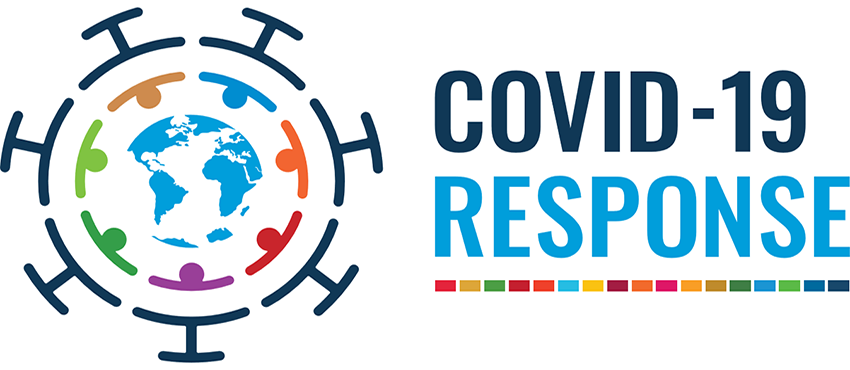COVID-19 Government Response
What happens when bureaucracy meets coronavirus?
We’ve all been at home under the stay-at-home orders for over two months now, and I don’t think it would be controversial to claim that the government’s response to COVID-19 has drastically changed our lifestyles. During this quarantine period, we have all seen various experts in different fields offering contradictory advice and statements regarding what the government should do. We have spent our time isolated at home, trying to flatten the curve of the pandemic so that healthcare workers are not overwhelmed with sudden influxes of cases.
Our whole situation leads me to wonder why we have ended up in such extreme circumstances. The U.S. government received formal warnings about the threat of COVID-19 as early as January 3, 2020. However, despite this early warning, President Trump took 70 days to officially recognize COVID-19 as more than just a potential threat, but a real danger to the safety and health of American citizens. This inaction, as of May 27, has resulted in over 1.7 million cases and over 100,000 deaths in the U.S., making the U.S. the most affected country in the world.
I can’t help but consider what our current situation would be like if we proactively took action during these two months to combat the virus. Our biggest issues with COVID-19 center around the ineffectiveness of treatment, insufficient testing and inadequate personal protective equipment (PPE) stores. If, during these two months, President Trump had ordered for the stockpiling of PPE and the early development and research of an effective diagnostic test or treatment, our current situation could look very different. At the bare minimum, we would have more knowledge about the true extent of the pandemic in the U.S. With luck, we would have fewer lives lost, and a smaller strain on our economy.
While it is always easy to look towards the past and lament on mistakes, I also think that President Trump’s actions after recognizing our shortage of PPE was commendable. The invocation of the Defense Production Act, while late and reactionary, has somewhat offset the lack of earlier preparation.
Still, President Trump’s attitude towards testing and treatment has been less effective. Trump, while attempting to maintain national morale through optimistic partial truths, may be hampering the effectiveness of COVID-19-related actions. His hopeful statements about hydroxychloroquine and chloroquine as an effective treatment — despite studies being small, in-vitro, and poorly controlled — have also created a mentality among some that the presence of treatment has made contracting COVID-19 less dangerous.
As a result, these people begin to see COVID-19 in a different light. Instead of concentrating on public health and the goal of flattening the curve and minimizing transmission, people focus on their economic difficulties, calling for a return to normal life. Across the country, protesters are leaving their homes to go to the streets, assembling against the restrictive guidelines for COVID-19 mitigation.
These so-called anti-quarantine protests call for the termination of stay-at-home orders, arguing that the maintenance of quarantine represents government overreach, and significantly threatens economic stability. Pragmatically, such protests fail to recognize how the termination of quarantine orders would increase contact between people, likely leading to an increase in COVID-19.
These views are prevalent among statewide leaders as well, further damaging the government’s response to COVID-19. Across the country, many states have reopened. Notably, though, among these reopened states, there has been a spike in cases, highlighting the dangers of reopening. For example, on May 18 — after the state had reopened — Texas saw a 1,801 case increase, a figure that represents the highest daily number of cases so far.
Ultimately, the government has to find a balance between public health and economics. Although certainly it is possible to maintain quarantine until the COVID-19 pandemic has ended, it is not feasible economically. With over 20 million jobs lost in the U.S. since quarantine first took place, the sheer number of people with economic difficulties have stressed the welfare system, creating pressure to reopen.
While I personally disagree with reopening — because of the potential of catastrophic loss of human life — ultimately, we don’t know what will happen. Everything we are dealing with is in abstracts and uncertainties, as COVID-19 has shown us that as a society, we were ill-prepared to deal with a global pandemic.
Moving forward, I think it is best for the government to take a more defined stance with respect to responsive policy. While some states in the country are reopening, others aren’t, and though it fits the goals of the founders that states have regional jurisdiction over the federal government, it makes all current plans ineffective. Our current solutions to COVID-19 mandate that as many people as possible follow them, but at least 30% of people don’t support stay-at-home orders, making them obsolete.
This is the major problem with the current response to COVID-19: that people don’t agree and thus won’t act together to solve our problems. The national government must take a stand and determine whether or not reopening or maintaining quarantine is the best way forward. However, no matter which solution is picked, most importantly, unity must be maintained so that everyone can act together and solve a societal problem without individualized ideas.



